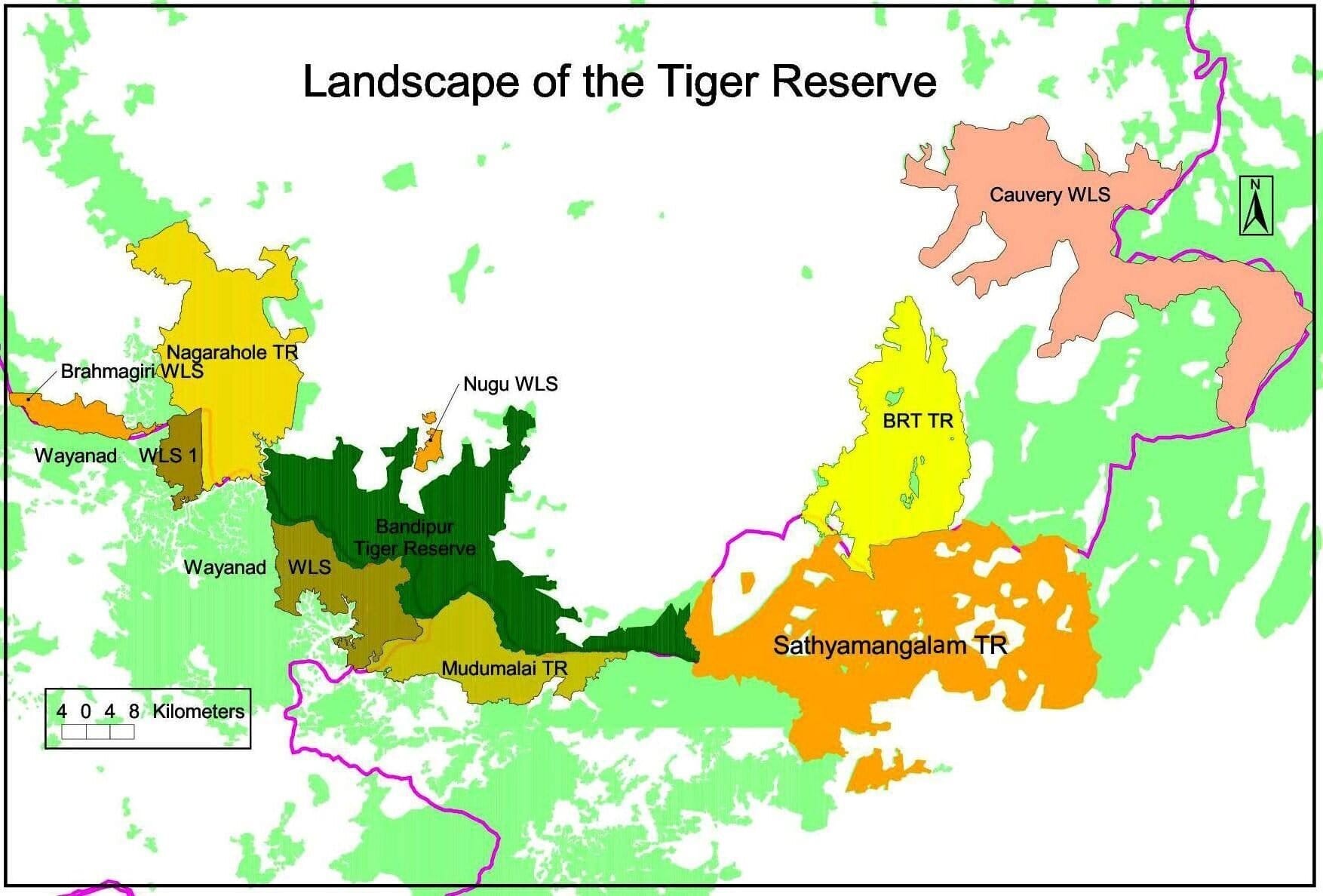Waterholes Revival in Bandipur Tiger Reserve | 03 Feb 2020
Why in News
Prolonged monsoon and unseasonal rains have helped to rejuvenate the waterholes in Bandipur Tiger Reserve, Karnataka.
Key Points
- There are 370 big and small waterholes (a depression in which water collects from where animals usually drink) in Bandipur and 85% of them are full.
- At Bandipur, majority of waterholes dry up by February and March leading to severe water stress situation for animals. But this year, it is expected that the depletion of water levels will take a little longer.
- Also, in the areas of water stress, 37 solar-powered borewells have been arranged that will function to replenish the waterholes periodically to further minimise the water scarcity.
Bandipur Tiger Reserve
- Established in: Bandipur Tiger Reserve was established in 1973 under Project Tiger. In 1985, by including adjacent areas from Venugopala Wildlife Park, it was enlarged and named as Bandipur National Park.
- Location: The Tiger Reserve is situated in two contiguous districts (Mysore and Chamarajanagar) of Karnataka and is located at the tri-junction area of the States of Karnataka, Tamil Nadu and Kerala. It forms a part of Nilgiri Biosphere Reserve.
- Ecological Diversity: Bandipur Tiger Reserve lies in one of the richest biodiversity areas of the country. It is surrounded by
- Mudumalai Tiger Reserve in the South,
- Wayanad Wildlife Sanctuary in the South-west &
- The Kabini Reservoir separates the Bandipur and Nagarahole Tiger Reserve on the North-west.
- Biodiversity: The Reserve is endowed with rich floral and faunal diversity and is recognized as one of the Mega Biodiversity Areas in the country. The Tiger and the Elephants are the flagship (iconic or symbolic species for a defined habitat, issue, campaign or environmental cause) and umbrella (species selected for making conservation-related decisions) species for the conservation of all the biota that this ecosystem represents.
- The Bandipur along with Nagarahole, Mudumalai, Sathyamangalam & Wayanad constitutes the single largest Wild population of Tigers in the world. This landscape comprises of 21% of the total forested area of the Western Ghats and holds one-eighth of the world's Tiger population (one-fourth of India’s Tiger population).
- This Landscape is also home to the single largest Asian Elephant population in the world and is part of the Mysore Elephant Reserve (MER).
- Rivers: The park is located between the Kabini river in the north and the Moyar river in the south. The Nugu river runs through the park. The highest point in the park is on a hill called Himavad Gopalaswamy Betta.

